Nominations for the 2020-2021 Freshman Common Reading are officially closed.
Educated: A memoir, by Tara Westover, has been chosen as the Freshman Common Read for 2020-2021.
Members of the CSUN community (students, faculty, staff, and alums) are invited to submit their opinion about any of these nominated titles by emailing Susanna Eng-Ziskin (susanna.eng[at]csun.edu)
If you'd like to nominate a title for CSUN's 2021-2022 Freshman Common Reading, please read the selection criteria and then fill out our brief online nomination form. For more information, read about our nomination process.
Educated: A Memoir by Tara Westover. 2018. 352 pages. (Common Read for 2020-2021) From the publisher: Tara Westover was seventeen the first time she set foot in a classroom. Born to survivalists in the mountains of Idaho, she prepared for the end of the world by stockpiling home-canned peaches and sleeping with her “head-for-the-hills” bag. In the summer she stewed herbs for her mother, a midwife and healer, and in the winter she salvaged metal in her father’s junkyard. When another brother got himself into college and came back with news of the world beyond the mountain, Tara decided to try a new kind of life. She taught herself enough mathematics, grammar, and science to take the ACT and was admitted to Brigham Young University. There, she studied psychology, politics, philosophy, and history, learning for the first time about pivotal world events like the Holocaust and the Civil Rights Movement. Her quest for knowledge transformed her, taking her over oceans and across continents, to Harvard and to Cambridge University. Only then would she wonder if she’d traveled too far, if there was still a way home. Educated is an account of the struggle for self-invention. It is a tale of fierce family loyalty, and of the grief that comes from severing one’s closest ties. With the acute insight that distinguishes all great writers, Westover has crafted a universal coming-of-age story that gets to the heart of what an education is and what it offers: the perspective to see one’s life through new eyes, and the will to change it. Noblitt adds: Educated: A Memoir is an engaging and quick read, full of opportunities for reflection. It encourages intellectual growth as Tara’s own intellectual curiosity is fueled, despite the monumental barriers placed in her path. Because it is about education and learning, the book easily translates into multiple courses and contexts. Tara’s family and upbringing presents a deep dive into a culture that may be unfamiliar but is brought to life in the book. Significant contemporary issues are explored including domestic abuse, repressive family structures, and sex-based discrimination. To call Educated a page turner is an understatement. There are passages that are heartbreaking, but multiple examples that show Tara's incredible growth. For all these reasons, I believe this would be a strong contender for the Freshman Common Reading Program. The book is available from the Oviatt Library and may be available through CSU+ from another CSU campus. It is also available as a print book, an ebook, and an audio book from the Los Angeles Public Library (LAPL). |
The Best We Could Do: An Illustrated Memoir by Thi Bui. 2018. 336 pages. (FINALIST) Nominated by Autumn Fabricant. From the publisher: An intimate and poignant graphic novel portraying one family’s journey from war-torn Vietnam, from debut author Thi Bui. This beautifully illustrated and emotional story is an evocative memoir about the search for a better future and a longing for the past. Exploring the anguish of immigration and the lasting effects that displacement has on a child and her family, Bui documents the story of her family’s daring escape after the fall of South Vietnam in the 1970s, and the difficulties they faced building new lives for themselves. At the heart of Bui’s story is a universal struggle: While adjusting to life as a first-time mother, she ultimately discovers what it means to be a parent—the endless sacrifices, the unnoticed gestures, and the depths of unspoken love. Despite how impossible it seems to take on the simultaneous roles of both parent and child, Bui pushes through. With haunting, poetic writing and breathtaking art, she examines the strength of family, the importance of identity, and the meaning of home. In what Pulitzer Prize–winning novelist Viet Thanh Nguyen calls “a book to break your heart and heal it,” The Best We Could Do brings to life Thi Bui’s journey of understanding, and provides inspiration to all of those who search for a better future while longing for a simpler past. Fabricant adds: I think that this book would engage freshman and draw them into reading and reflection. I think that the fact that it is a graphic novel would intrigue and engage many of the students. Additionally, I believe that the book would offer many deeper questions that the students could reflect on such as: How does one's history define their present? What role does your family have in shaping who you are? What does it mean to be an American? What kind of sacrifices are you willing to make for your future? I also think that it could open up discussions about what literature is, too. I could see it used in a variety of courses (art, literature, Asian American studies, etc.) and contexts. More information from NBC News The book is available from the Oviatt Library and may be available through CSU+ from another CSU campus. It is also available as a print book and an ebook from the Los Angeles Public Library (LAPL). |
Becoming Ms. Burton: From Prison to Recovery to Leading the Fight for Incarcerated Women, by Susan Burton and Cari Lynn. 2017. 228 pages. (FINALIST) From the publisher: "Susan Burton’s world changed in an instant when her five-year-old son was killed by a van driving down their street. Consumed by grief and without access to professional help, Susan self-medicated, becoming addicted first to cocaine, then crack. As a resident of South Los Angeles, a black community under siege in the War on Drugs, it was but a matter of time before Susan was arrested. She cycled in and out of prison for over fifteen years; never was she offered therapy or treatment for addiction. On her own, she eventually found a private drug rehabilitation facility. Once clean, Susan dedicated her life to supporting women facing similar struggles. Her organization, A New Way of Life, operates five safe homes in Los Angeles that supply a lifeline to hundreds of formerly incarcerated women and their children—setting them on the track to education and employment rather than returns to prison. Becoming Ms. Burton not only humanizes the deleterious impact of mass incarceration, it also points the way to the kind of structural and policy changes that will offer formerly incarcerated people the possibility of a life of meaning and dignity." Henige adds: This book addresses a significant problem in our society. While reading the book, students will gain insights about our criminal justice system through Susan Burton's life story. Susan is a success story that shows, first hand, how we can improve our justice system to reduce crime and improve the quality of life for many individuals and families. This story is particularly relevant to our students because it happened here in Los Angeles, and Susan Burton has visited CSUN many times already. In fact, CSUN gave her an honorary degree just this year (2019). From Publishers Weekly The book is available from the Oviatt Library and may be available through CSU+ from another CSU campus. It is also available as a print book and an ebook from the Los Angeles Public Library (LAPL). |
We Need to Talk: How to Have Conversations That Matter by Celeste Headlee. 2017. 272 pages. (FINALIST) From the publisher: In this urgent and insightful book, public radio journalist Celeste Headlee shows us how to bridge what divides us--by having real conversations. “We Need to Talk is an important read for a conversationally-challenged, disconnected age. Headlee is a talented, honest storyteller, and her advice has helped me become a better spouse, friend, and mother.” (Jessica Lahey, author of New York Times bestseller The Gift of Failure) Today most of us communicate from behind electronic screens, and studies show that Americans feel less connected and more divided than ever before. The blame for some of this disconnect can be attributed to our political landscape, but the erosion of our conversational skills as a society lies with us as individuals. And the only way forward, says Headlee, is to start talking to each other. In We Need to Talk, she outlines the strategies that have made her a better conversationalist—and offers simple tools that can improve anyone’s communication. Eng-Ziskin adds: This book really encouraged me to examine and reflect upon my own conversational skills and behaviors. I can say with certainty that I am guilty of several traits that inhibit conversation and communication and have already begun employing some of the strategies she suggests. The writing is accessible, and I believe students will be able to gain a great deal from it. Also, you can watch her Ted Talk on this subject. It is available as a print book, an audiobook, and an ebook from the Los Angeles Public Library (LAPL). |
From the publisher: IT IS TIME. It is time to free our voice. To speak is a revolution. For too long, through the most intimate acts of erasure, women have been silenced. Now, women everywhere are breaking through the limits placed on us by family, society, and tradition. To find our voices. To make space for ourselves in this world. Now is the moment to reclaim what was once lost, stolen, forsaken, or abandoned. I Am Yours is about my fight to protect and free my voice from those who have sought to silence me, for the sake of creating a world where all voices are welcome and respected. Because the voice, without intimacy, will atrophy. We’re in this together. You are mine, and I am yours. Attias adds: I think it meets all the criteria. It details her experiences with sexual violence interpersonally and structurally. The book is not published yet, so I have not yet read it, but I co-edited a collection of essays that the author wrote for, and I am very familiar with her writing (which is excellent). She is also an incredible speaker and performer, as you can tell from some of her work that is available online (here is one presentation of hers, and here is a video of her introducing the book). The book raises issues that will bring a lot of interesting and passionate discussion to the classroom touching on issues of gender identity, violence, structural inequality, sex trafficking, postcoloniality, and the international division of labor. The book is not just a social critique; it also offers the author's story of empowerment and success, a story that I think will be motivational for our students. More information from the NY Journal of Books Available through the Los Angeles Public Library. |
Nominated by: Dana Stone Harris From the publisher: Sixteen-year-old Starr Carter moves between two worlds: the poor neighborhood where she lives and the fancy suburban prep school she attends. The uneasy balance between these worlds is shattered when Starr witnesses the fatal shooting of her childhood best friend Khalil at the hands of a police officer. Khalil was unarmed. Soon afterward, his death is a national headline. Some are calling him a thug, maybe even a drug dealer and a gangbanger. Protesters are taking to the streets in Khalil’s name. Some cops and the local drug lord try to intimidate Starr and her family. What everyone wants to know is: what really went down that night? And the only person alive who can answer that is Starr. But what Starr does—or does not—say could upend her community. It could also endanger her life. Harris adds: It had a great impact on me and anyone I have recommended to read it, including my graduate students. The book is available from the Oviatt Library and may be available through CSU+ from another CSU campus. It is also available as a print book, an ebook, and an audio book from the Los Angeles Public Library (LAPL). |
B Nominated by Carolyn Darin. From the publisher: American food is the story of mash-ups. Immigrants arrive, cultures collide, and out of the push-pull come exciting new dishes and flavors. But for Edward Lee, who, like Anthony Bourdain or Gabrielle Hamilton, is as much a writer as he is a chef, that first surprising bite is just the beginning. What about the people behind the food? What about the traditions, the innovations, the memories? A natural-born storyteller, Lee decided to hit the road and spent two years uncovering fascinating narratives from every corner of the country. There’s a Cambodian couple in Lowell, Massachusetts, and their efforts to re-create the flavors of their lost country. A Uyghur café in New York’s Brighton Beach serves a noodle soup that seems so very familiar and yet so very exotic—one unexpected ingredient opens a window onto an entirely unique culture. A beignet from Café du Monde in New Orleans, as potent as Proust’s madeleine, inspires a narrative that tunnels through time, back to the first Creole cooks, then forward to a Korean rice-flour hoedduck and a beignet dusted with matcha. Sixteen adventures, sixteen vibrant new chapters in the great evolving story of American cuisine. And forty recipes, created by Lee, that bring these new dishes into our own kitchens. Darin adds: This book explicitly explores themes of belonging and immigrant assimilation through the exploration of food culture. The author is insightful in his interactions with cultures that he is not a member of; for instance, when he arrives at a middle-eastern community during Ramadan (without knowing this in advance) he also participates in the fast to better understand this community. I think this book will hook students in the food description, but really illuminate themes of intercultural understanding and assimilation. More information from LA Times It is available as a print book and an ebook from the Los Angeles Public Library (LAPL). |
From the publisher: Hindsight: Coming of age on the streets of Hollywood is a gripping memoir of the teenage years of Sheryl Recinos, MD. She reflects on the journey that changed her life when she was a teen in her debut book. She chronicles her dysfunctional upbringing that led her through foster care, detention, and eventually to the streets of Hollywood.Hindsight gives Sheryl’s personal account of the dangers of teen homelessness and shows how she struggles to complete high school and find work while living on the streets and in shelters. The book reveals the dangerous obstacles that she encountered during her journey, including the murder of a friend and the constant dangers of predators seeking to harm youth on the streets. Her story culminates with her harrowing tale of being a homeless pregnant teen and illustrates how she found hope and made it off the streets. After Sheryl Recinos, MD, overcomes homelessness, she later finds success as a physician and continues to give back to the community that saved her. Feldman adds: Accessible language. Compelling story that begs the question "what would I have done?" Raises questions regarding mental health, the dysfunctional family, juvenile justice system, homelessness, perseverance, education, healthy relationships, empathy, teen pregnancy. |
The Dispatcher by John Scalzi. 2017. 128 pages. From the publisher: One day, not long from now, it becomes almost impossible to murder anyone—999 times out of a thousand, anyone who is intentionally killed comes back. How? We don't know. But it changes everything: war, crime, daily life. Tony Valdez is a Dispatcher—a licensed, bonded professional whose job is to humanely dispatch those whose circumstances put them in death's crosshairs, so they can have a second chance to avoid the reaper. But when a fellow Dispatcher and former friend is apparently kidnapped, Tony learns that there are some things that are worse than death, and that some people are ready to do almost anything to avenge what they see as a wrong. It's a race against time for Valdez to find his friend before it's too late…before not even a Dispatcher can save him. Givertz adds: This book is a quick read that will encourage meaningful conversations about numerous ethical issues. The freshmen will be eager to read about the missing person, his questionable career choice, and find out if he is still alive. Readers will ask themselves, if you kill someone and they come back to life, is it really murder? It is available from the Los Angeles Public Library (LAPL). |
Writing My Wrongs: Life, Death, and Redemption in an American Prison by Shaka Senghor. 2016. 288 pages. From the publisher: Shaka Senghor was raised in a middle class neighborhood on Detroit’s east side during the height of the 1980s crack epidemic. An honor roll student and a natural leader, he dreamed of becoming a doctor—but at age 11, his parents’ marriage began to unravel, and the beatings from his mother worsened, sending him on a downward spiral that saw him run away from home, turn to drug dealing to survive, and end up in prison for murder at the age of 19, fuming with anger and despair. Writing My Wrongs is the story of what came next. During his nineteen-year incarceration, seven of which were spent in solitary confinement, Senghor discovered literature, meditation, self-examination, and the kindness of others—tools he used to confront the demons of his past, forgive the people who hurt him, and begin atoning for the wrongs he had committed. Upon his release at age thirty-eight, Senghor became an activist and mentor to young men and women facing circumstances like his. His work in the community and the courage to share his story led him to fellowships at the MIT Media Lab and the Kellogg Foundation, membership in Oprah Winfrey’s SuperSoul 100, and invitations to speak at events like TED and the Aspen Ideas Festival. In equal turns, Writing My Wrongs is a page-turning portrait of life in the shadow of poverty, violence, and fear; an unforgettable story of redemption, reminding us that our worst deeds don’t define us; and a compelling witness to our country’s need for rethinking its approach to crime, prison, and the men and women sent there. Eng-Ziskin adds: It's a thought provoking book / memoir, in which the author vacillates between writing about his time as a teenager selling drugs and serving time in prison for murder. It is a brutally honest story about repentance, atonement, and our prison culture. You can view his Ted Talk online. The book may be available through CSU+ from another CSU campus. It is also available as a print book, an ebook, and an audio book from the Los Angeles Public Library (LAPL). |
An Indigenous Peoples' History of the United States by Roxanne Dunbar-Ortiz. 2015. 312 pages. In An Indigenous Peoples’ History of the United States, Dunbar-Ortiz adroitly challenges the founding myth of the United States and shows how policy against the Indigenous peoples was colonialist and designed to seize the territories of the original inhabitants, displacing or eliminating them. And as Dunbar-Ortiz reveals, this policy was praised in popular culture, through writers like James Fenimore Cooper and Walt Whitman, and in the highest offices of government and the military. Shockingly, as the genocidal policy reached its zenith under President Andrew Jackson, its ruthlessness was best articulated by US Army general Thomas S. Jesup, who, in 1836, wrote of the Seminoles: “The country can be rid of them only by exterminating them.” Spanning more than four hundred years, this classic bottom-up peoples’ history radically reframes US history and explodes the silences that have haunted our national narrative. Neubauer adds: The book tells the history of the United States from the perspective of native peoples. It counters the myths of the pioneer settlers encountering savages in their push to establish a foothold on the North American continent. It documents the many atrocities against native peoples perpetrated by settlers and the resulting land grab and displacement of native peoples. More information from the Santa Fe New Mexican The book is available as an ebook from the Oviatt Library. It is also available as a print book, an audio book and an ebook from the Los Angeles Public Library (LAPL). |
From the publisher: The Victorian language of flowers was used to convey romantic expressions: honeysuckle for devotion, asters for patience, and red roses for love. But for Victoria Jones, it’s been more useful in communicating mistrust and solitude. After a childhood spent in the foster-care system, she is unable to get close to anybody, and her only connection to the world is through flowers and their meanings. Now eighteen and emancipated from the system with nowhere to go, Victoria realizes she has a gift for helping others through the flowers she chooses for them. But an unexpected encounter with a mysterious stranger has her questioning what’s been missing in her life. And when she’s forced to confront a painful secret from her past, she must decide whether it’s worth risking everything for a second chance at happiness. Mercado adds: The Language of Flowers is a wonderful coming of age story set in San Francisco that begins on the day Victoria turns 18 and is released from many years in the foster care system. Shy and alone in the world, she finds a job in a flower shop using her knowledge of flowers and their meanings to create passing relationships with the customers. Though she feels like an outcast, she is not a victim, and she navigates many adversities while learning to trust the people she meets. Beautifully told, the story alternates between her current life and her life as an unwanted foster child. Though it is a hopeful book, it does not tie everything up in a bow at the end. One of its many strong points is that it is a realistic story given the circumstances. Students would relate to 18-year old Victoria, and themes include the foster care system and its consequences, complicated families, belonging, relationships, trust, problem-solving skills, and teen pregnancy. It is an emotionally rich and compelling story that has stayed with me many years after reading it; I believe the students would truly be drawn in to reading this story. It is available as a print book, an ebook, and an audio book from the Los Angeles Public Library (LAPL). |
From the publisher: In a life filled with meaning and accomplishment, Michelle Obama has emerged as one of the most iconic and compelling women of our era. As First Lady of the United States of America—the first African American to serve in that role—she helped create the most welcoming and inclusive White House in history, while also establishing herself as a powerful advocate for women and girls in the U.S. and around the world, dramatically changing the ways that families pursue healthier and more active lives, and standing with her husband as he led America through some of its most harrowing moments. Along the way, she showed us a few dance moves, crushed Carpool Karaoke, and raised two down-to-earth daughters under an unforgiving media glare. Soto adds: I believe Obama's memoir is one of the most engaging books I have ever read. As a faculty member, it constantly put me in a state of reflection, and I can imagine how our students will receive it. It would be an excellent choice. The book is available from the Oviatt Library and may be available through CSU+ from another CSU campus. It is also available as a print book, an audiobook, and an ebook from the Los Angeles Public Library (LAPL). |
From the publisher: In this brilliant, heartbreaking book, Matthew Desmond takes us into the poorest neighborhoods of Milwaukee to tell the story of eight families on the edge. Arleen is a single mother trying to raise her two sons on the $20 a month she has left after paying for their rundown apartment. Scott is a gentle nurse consumed by a heroin addiction. Lamar, a man with no legs and a neighborhood full of boys to look after, tries to work his way out of debt. Vanetta participates in a botched stickup after her hours are cut. All are spending almost everything they have on rent, and all have fallen behind. The fates of these families are in the hands of two landlords: Sherrena Tarver, a former schoolteacher turned inner-city entrepreneur, and Tobin Charney, who runs one of the worst trailer parks in Milwaukee. They loathe some of their tenants and are fond of others, but as Sherrena puts it, “Love don’t pay the bills.” She moves to evict Arleen and her boys a few days before Christmas. Even in the most desolate areas of American cities, evictions used to be rare. But today, most poor renting families are spending more than half of their income on housing, and eviction has become ordinary, especially for single mothers. In vivid, intimate prose, Desmond provides a ground-level view of one of the most urgent issues facing America today. As we see families forced into shelters, squalid apartments, or more dangerous neighborhoods, we bear witness to the human cost of America’s vast inequality—and to people’s determination and intelligence in the face of hardship. Based on years of embedded fieldwork and painstakingly gathered data, this masterful book transforms our understanding of extreme poverty and economic exploitation while providing fresh ideas for solving a devastating, uniquely American problem. Its unforgettable scenes of hope and loss remind us of the centrality of home, without which nothing else is possible. Embleton adds: This book is very engaging and easy to read. It also could be "chunked up". I think it would elicit very lively discussions in the classroom. It is very timely given the current affordable housing shortage and homeless issues in Los Angeles and elsewhere. It examines the causes for eviction for nine different families/people. It is interesting in that much of it is from the landlord or building manager's perspective. Those evicted come from all different backgrounds, ages, races/ethnicities, and genders. Layoffs, physical disabilities, alcoholism and drug abuse, and the opioid crisis are all addressed. It is also a story of hope and redemption. The book is available from the Oviatt Library and may be available through CSU+ from another CSU campus. It is also available as a print book, an audiobook, and an ebook from the Los Angeles Public Library (LAPL). |
Weaving her lifelong love of books and reading into an investigation of the fire, award-winning New Yorker reporter and New York Times bestselling author Susan Orlean delivers a mesmerizing and uniquely compelling book that manages to tell the broader story of libraries and librarians in a way that has never been done before. In The Library Book, Orlean chronicles the LAPL fire and its aftermath to showcase the larger, crucial role that libraries play in our lives; delves into the evolution of libraries across the country and around the world, from their humble beginnings as a metropolitan charitable initiative to their current status as a cornerstone of national identity; brings each department of the library to vivid life through on-the-ground reporting; studies arson and attempts to burn a copy of a book herself; reflects on her own experiences in libraries; and reexamines the case of Harry Peak, the blond-haired actor long suspected of setting fire to the LAPL more than thirty years ago. Along the way, Orlean introduces us to an unforgettable cast of characters from libraries past and present—from Mary Foy, who in 1880 at eighteen years old was named the head of the Los Angeles Public Library at a time when men still dominated the role, to Dr. C.J.K. Jones, a pastor, citrus farmer, and polymath known as “The Human Encyclopedia” who roamed the library dispensing information; from Charles Lummis, a wildly eccentric journalist and adventurer who was determined to make the L.A. library one of the best in the world, to the current staff, who do heroic work every day to ensure that their institution remains a vital part of the city it serves. Brimming with her signature wit, insight, compassion, and talent for deep research, The Library Book is Susan Orlean’s thrilling journey through the stacks that reveals how these beloved institutions provide much more than just books—and why they remain an essential part of the heart, mind, and soul of our country. It is also a master journalist’s reminder that, perhaps especially in the digital era, they are more necessary than ever. The book is available from the Oviatt Library and may be available through CSU+ from another CSU campus. It is also available as a print book, an audiobook, and an ebook from the Los Angeles Public Library (LAPL). |
From Amazon: THIS BOOK IS ABOUT finding a better, more meaningful life. Robert Hanley has an insightful way of looking at the world-finding deeper meaning in everyday events that seem to float past the observations of most people. His unique perception has helped make his life better, bringing him greater understanding, joy, fulfillment, and peace. He reveals his common sense process through wise, humorous, and heartwarming real-life tales taken from his own personal experiences. They may well make you laugh, cry, think, and help you to see the common threads of what he calls "discovering the obvious." Whether filling up his car at a gas station or having his teeth cleaned at the dentist, auditioning for a film starring Robert De Niro and Al Pacino or giving the eulogy at Dean Martin's memorial, the universal truths and values Robert uncovers in these anecdotes and stories relay the everyday applicability of a simple perspective that can provide enormous benefits to each of us in our respective journeys through life Kinsella adds: I believe this book offers a bit of positivity in an increasingly negative world. If we are to make any progress as a society, we must grow as individuals, and in our ability to understand each other. I believe this book definitely promotes this. I am currently a graduate student at CSUN, and also finished my BA degree at the University. Especially in light of the recent turmoil on campus, I believe a book like this - that promotes tolerance and the ability to have compassion for others - and even for yourself, would not only be helpful but perhaps an even vital revolt against all the negativity. |

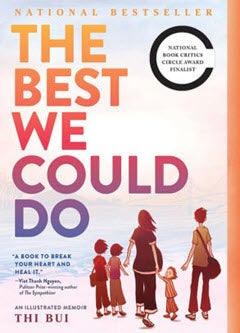
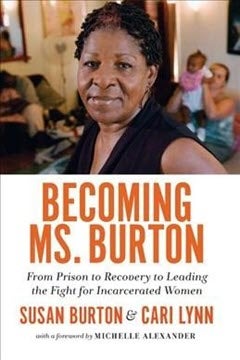
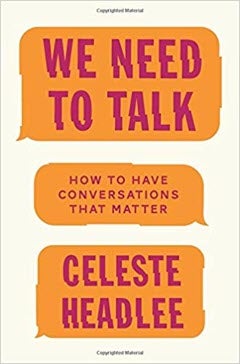
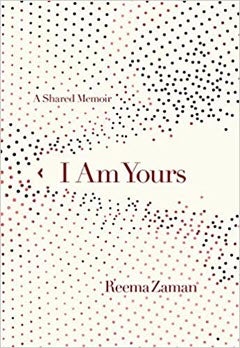 I Am Yours: A Shared Memoir by Reema Zaman. 2019. 300 pages.
I Am Yours: A Shared Memoir by Reema Zaman. 2019. 300 pages.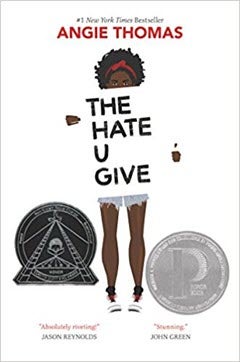 The Hate U Give by Angie Thomas. 2017. 464 pages.
The Hate U Give by Angie Thomas. 2017. 464 pages. uttermilk Graffiti by Edward Lee. 2018. 320 pages.
uttermilk Graffiti by Edward Lee. 2018. 320 pages. Hindsight: Coming of Age on the Streets of Hollywood, by Sheryl Recinos. 2018. 388 pages.
Hindsight: Coming of Age on the Streets of Hollywood, by Sheryl Recinos. 2018. 388 pages.
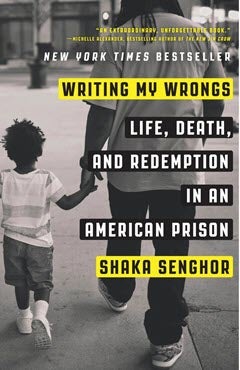
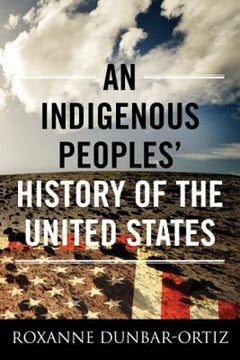
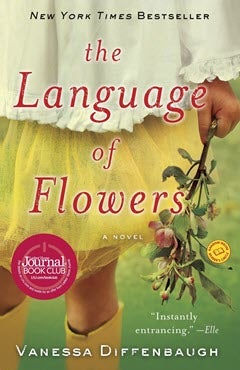 The Language of Flowers by Vanessa Diffenbaugh. 2012. 334 pages.
The Language of Flowers by Vanessa Diffenbaugh. 2012. 334 pages.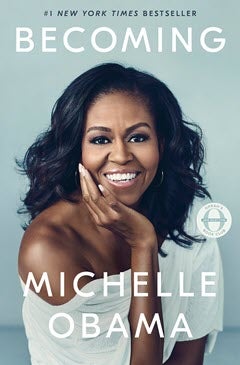 Becoming by Michelle Obama. 2018. 448 pages.
Becoming by Michelle Obama. 2018. 448 pages.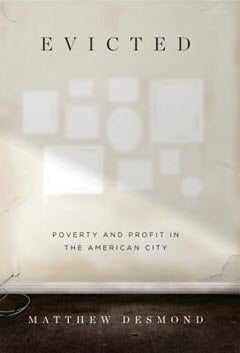 Evicted: Poverty and Profit in the American City by Matthew Desmond. 2017. 448 pages.
Evicted: Poverty and Profit in the American City by Matthew Desmond. 2017. 448 pages.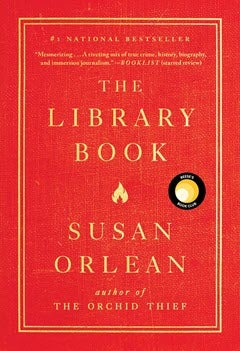 The Library Book by Susan Orlean. 2018. 336 pages.
The Library Book by Susan Orlean. 2018. 336 pages.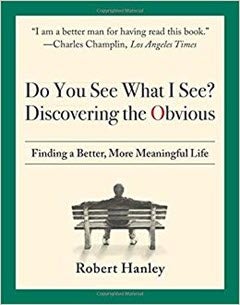 Do You See What I See? Discovering the Obvious by Robert Hanley. 2017. 194 pages.
Do You See What I See? Discovering the Obvious by Robert Hanley. 2017. 194 pages.